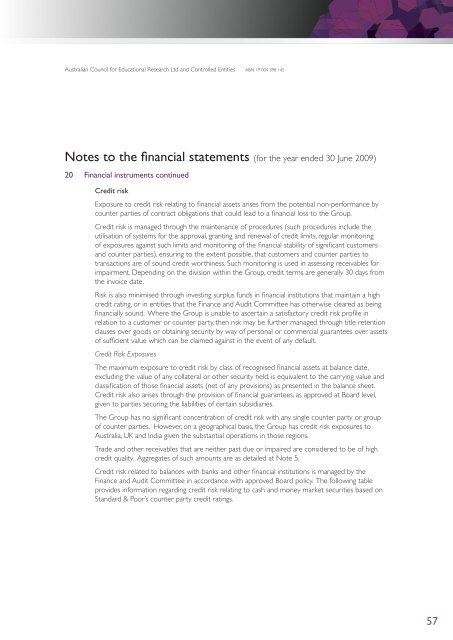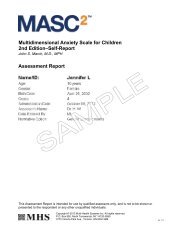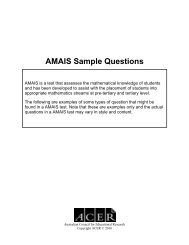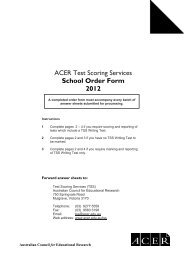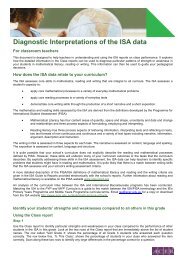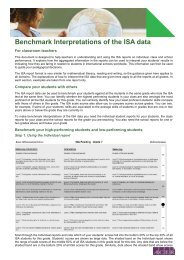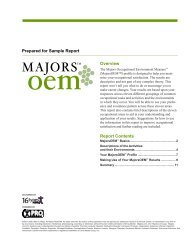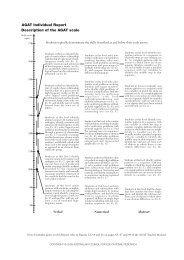ACER Annual Report 2008-2009
ACER Annual Report 2008-2009
ACER Annual Report 2008-2009
You also want an ePaper? Increase the reach of your titles
YUMPU automatically turns print PDFs into web optimized ePapers that Google loves.
Australian Council for Educational Research Ltd and Controlled Entities ABN 19 004 398 145<br />
Notes to the financial statements (for the year ended 30 June <strong>2009</strong>)<br />
20 Financial instruments continued<br />
Credit risk<br />
Exposure to credit risk relating to financial assets arises from the potential non-performance by<br />
counter parties of contract obligations that could lead to a financial loss to the Group.<br />
Credit risk is managed through the maintenance of procedures (such procedures include the<br />
utilisation of systems for the approval, granting and renewal of credit limits, regular monitoring<br />
of exposures against such limits and monitoring of the financial stability of significant customers<br />
and counter parties), ensuring to the extent possible, that customers and counter parties to<br />
transactions are of sound credit worthiness. Such monitoring is used in assessing receivables for<br />
impairment. Depending on the division within the Group, credit terms are generally 30 days from<br />
the invoice date.<br />
Risk is also minimised through investing surplus funds in financial institutions that maintain a high<br />
credit rating, or in entities that the Finance and Audit Committee has otherwise cleared as being<br />
financially sound. Where the Group is unable to ascertain a satisfactory credit risk profile in<br />
relation to a customer or counter party, then risk may be further managed through title retention<br />
clauses over goods or obtaining security by way of personal or commercial guarantees over assets<br />
of sufficient value which can be claimed against in the event of any default.<br />
Credit Risk Exposures<br />
The maximum exposure to credit risk by class of recognised financial assets at balance date,<br />
excluding the value of any collateral or other security held, is equivalent to the carrying value and<br />
classification of those financial assets (net of any provisions) as presented in the balance sheet.<br />
Credit risk also arises through the provision of financial guarantees, as approved at Board level,<br />
given to parties securing the liabilities of certain subsidiaries.<br />
The Group has no significant concentration of credit risk with any single counter party or group<br />
of counter parties. However, on a geographical basis, the Group has credit risk exposures to<br />
Australia, UK and India given the substantial operations in those regions.<br />
Trade and other receivables that are neither past due or impaired are considered to be of high<br />
credit quality. Aggregates of such amounts are as detailed at Note 5.<br />
Credit risk related to balances with banks and other financial institutions is managed by the<br />
Finance and Audit Committee in accordance with approved Board policy. The following table<br />
provides information regarding credit risk relating to cash and money market securities based on<br />
Standard & Poor’s counter party credit ratings.<br />
57


